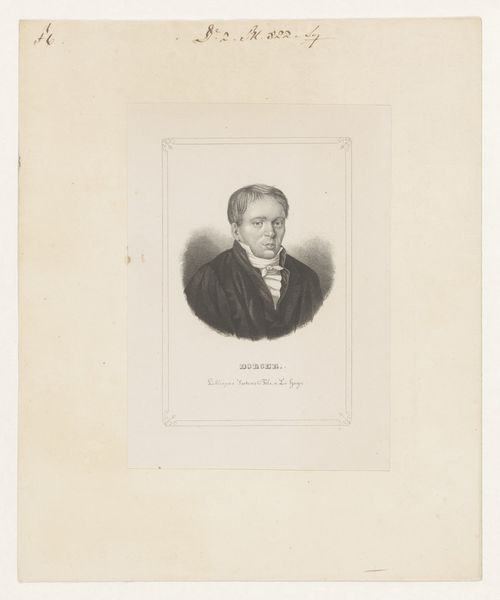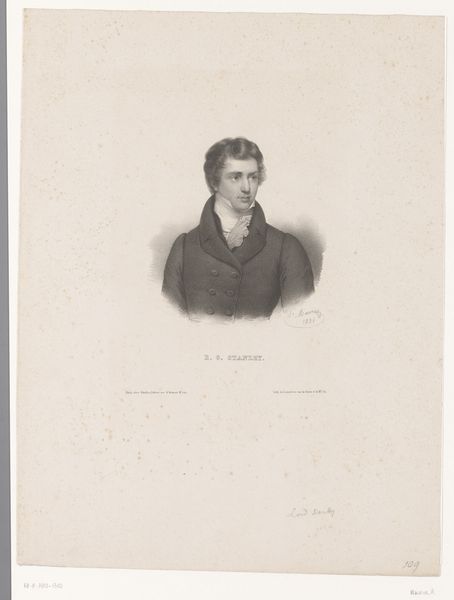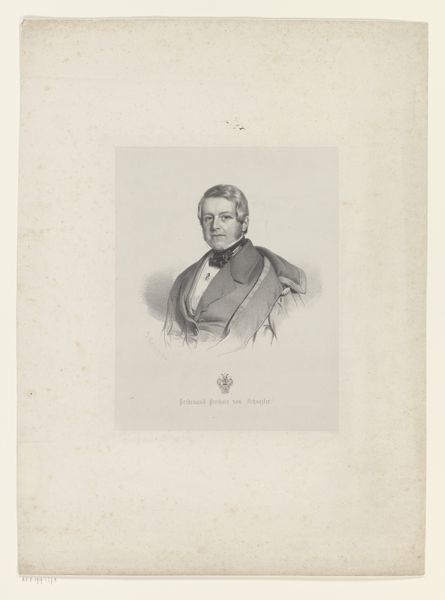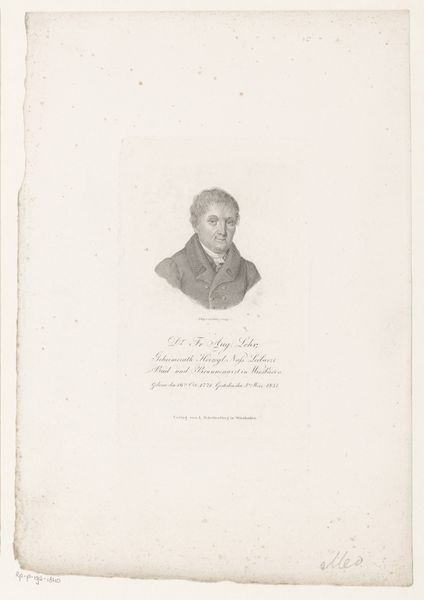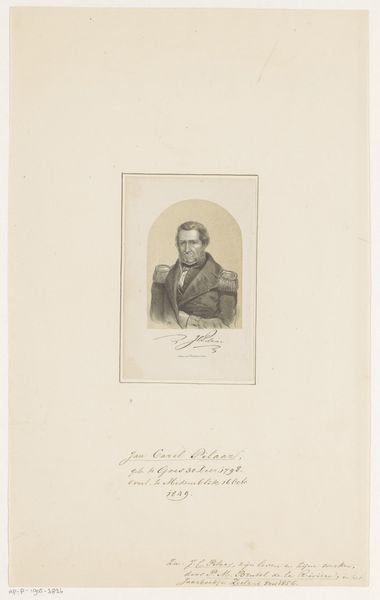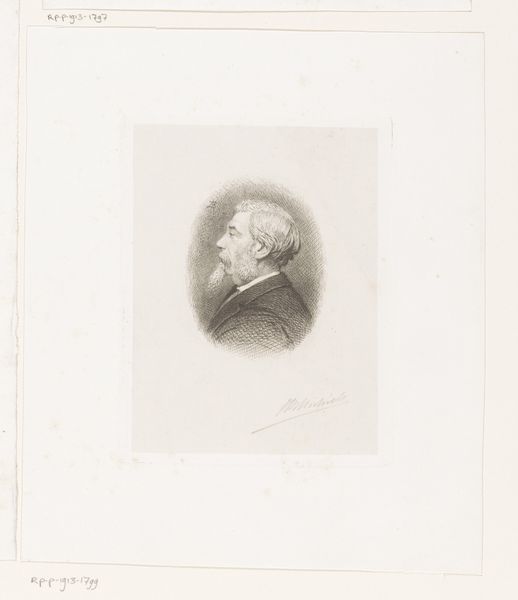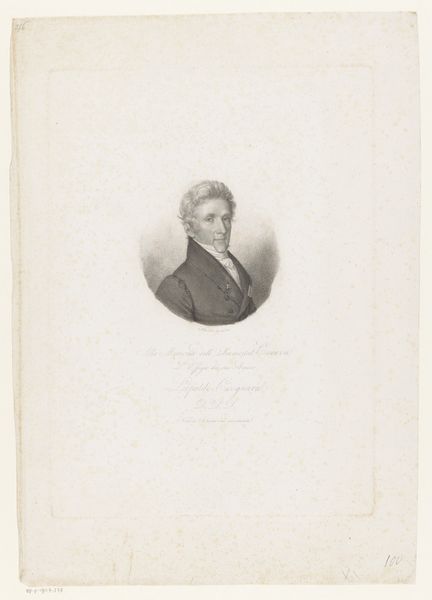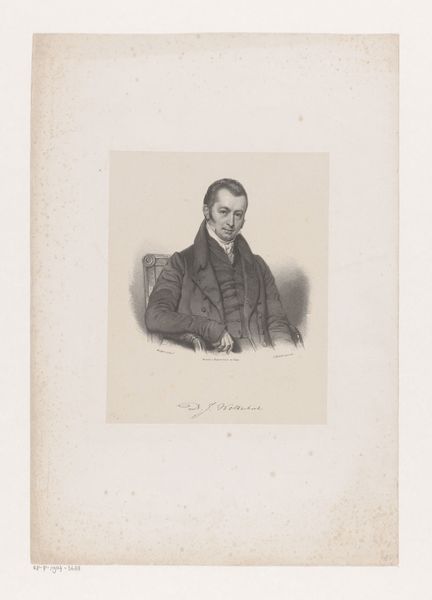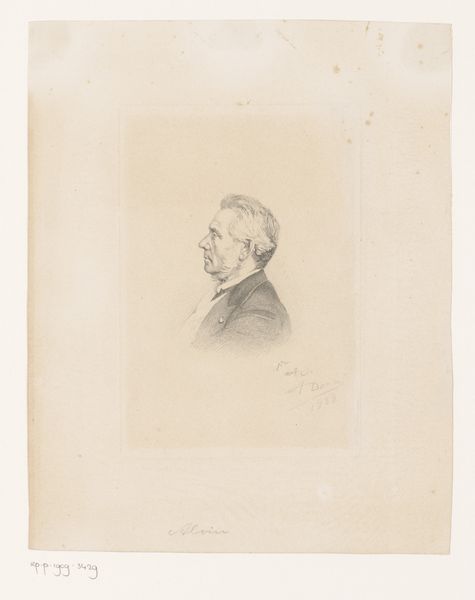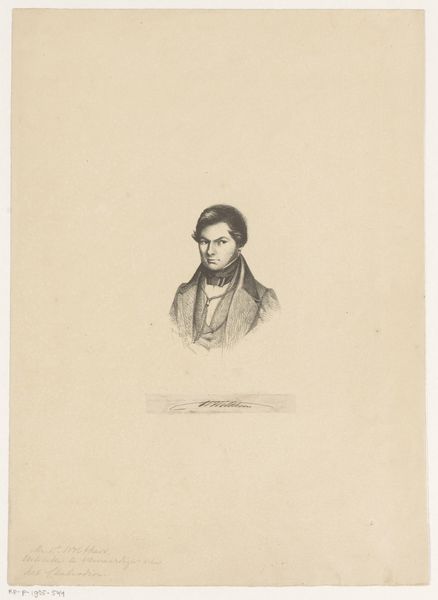
print, engraving
#
portrait
# print
#
academic-art
#
engraving
#
realism
Dimensions: height 180 mm, width 130 mm, height 335 mm, width 255 mm
Copyright: Rijks Museum: Open Domain
This undated portrait of Mr. Priessnitz is an etching, a printmaking technique that relies on corrosive acid to create a design in a metal plate. The etcher would have first coated the plate, likely made of copper or zinc, with a waxy, acid-resistant substance called a ground. Using a sharp needle, they would then draw the portrait, exposing the metal beneath. The plate is then submerged in acid, which bites into the exposed lines, creating grooves. The longer the plate is left in the acid, the deeper and darker the lines will be. This process allowed for relatively fine and detailed lines, capturing the likeness of the subject. After the plate is cleaned, it is inked, and the surface wiped clean, leaving ink only in the etched lines. Damp paper is then pressed against the plate, transferring the image. The printing press, developed in the 15th century, allowed for the relatively quick reproduction of images. This was extremely important to the rise of capitalism, enabling communication, standardization, and mass production. Looking closely at the printed surface, you can truly appreciate the relationship between industrialization, artistic skill, and social context.
Comments
No comments
Be the first to comment and join the conversation on the ultimate creative platform.
